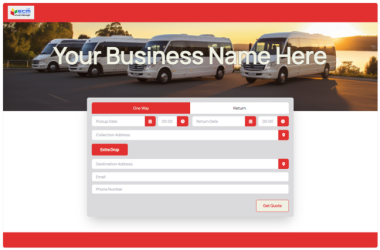Last Updated on: 15th February 2024, 12:37 pm
Debt is an inevitable reality for most businesses, a necessary tool for growth and expansion. However, left unchecked, mounting debt obligations can strangle even the most promising of companies.
Confronting and overcoming problem debt is thus an essential competency for any business leader. But where do you start in untangling the web of liabilities to chart a path towards financial stability? This comprehensive guide on business debt relief breaks down the critical steps every entrepreneur should understand.
I. Understanding Your Debt Situation
Gaining clarity about your existing debts constitutes the crucial first step in mapping out an effective debt relief strategy. This involves thoroughly analyzing your profit and loss statements, cash flow, assets and liabilities, and all outstanding loan obligations. Look out for these troubling indicators of excessive debt:
- Debt obligations exceeding yearly profits
- Consistently negative cash flow
- High ratio of liabilities against assets
- Ballooning interest payments
Conducting this financial audit will determine whether your debt load is manageable or in need of debt relief measures. It will also inform how aggressively you need to act. Pay attention to surges in your debt-to-income ratio and drops in your current, quick and cash ratios as well. These signal deteriorating business financial health warranting prompt intervention.
When analyzing your debt situation, be sure to gather information on all financing arrangements including bank loans, lines of credit, credit card balances, accounts payable terms with suppliers, lease agreements, and any other payment obligations. Review the principal amounts owed, interest rates charged, minimum payment amounts, loan covenants, and repayment timelines.
This data provides a comprehensive view of your total debt position. Based on the terms and conditions, you can then effectively model cash flow requirements going forward and identify vulnerabilities that may require renegotiation. Tracking metrics such as debt-to-equity ratios over time also helps to identify when your business’s financial leverage becomes risky.
II. Strategies for Managing and Reducing Debt
Once you have a clear assessment of your debt, explore these proven strategies for repayment and reduction:
1. Restructuring and Consolidating Debts
According to the ALLOW tool from the U.S. Small Business Administration, renegotiating the terms of your debt obligations can provide much needed temporary relief. Consider requesting:
- Lower interest rates
- Longer repayment terms
- Reduced monthly payments
Consolidating multiple high-interest debts into a single, low-interest loan can also help simplify repayment. This debt restructuring technique works best for uncollateralized debts like credit cards or lines of credit. Debt consolidation essentially replaces multiple distinct payments owed to various creditors with a single payment at a lower interest cost. This greatly simplifies cash flow planning each month.
When working with lenders and creditors, be upfront about your financial difficulties in making aggressive payments under existing terms. Provide clear documentation illustrating business viability in the long run to negotiate revised timelines that ease the burden. Cost transparency and realistic projections will be key to securing win-win compromises.
Offering additional collateral or guarantees from ownership may also sweeten the proposition for creditors to get deals done. Just be strategic by not over-leveraging important assets. Having reputable legal counsel to vet any reworked financing agreements is highly advisable as well before signing revised contracts.
2. Accessing Debt Relief Programs
State and federal debt relief programs exist to aid small businesses facing financial hardship, including:
- SBA 7(a) Loans – Offers forgiveness for up to $150,000 for existing qualifying loans taken out before September 27, 2020.
- State Small Business Credit Initiative – Provides collateral support for new bank loans to small businesses in need.
Small business owners should thoroughly research the lending rules and eligibility criteria for government-sponsored debt relief initiatives. In particular, pay close attention to qualifying time windows, industry restrictions, location stipulations, maximum relief amounts, application documentation requirements, and forgiveness versus restructuring terms.
Consult the dedicated advisors running these programs to determine suitability rather than simply assuming your business meets all parameters. Government bureaucracies often incorporate complex, even obscure provisions that business owners can easily overlook. So make use of freely available guidance to strengthen the likelihood of securing access to these invaluable lifelines.
3. Prioritizing Debts
Adopting the debt avalanche method by paying off high-interest debts first while making minimum payments on all others can maximize interest savings. This targeted approach allows you to eliminate debts completely versus simply making monthly payments.
For high priority debts, also consider negotiating one-time settlements for less than total amounts owed when cash is available. Even agreeing to discounted lump sum payments in the range of 50 to 70 cents on the dollar can significantly accelerate elimination timelines by avoiding compounding interest payments.
When targeting debts, consider all factors beyond just interest rates including original purpose, underlying collateral obligations, tax implications, and other tied accounts. Settling old operational debts first may make more sense than addressing newer financing secured by assets pivotal to income generation. Adopting a holistic view reduces chances of unintended consequences down the line after acting on standard recommendations.
4. Cutting Costs and Selling Assets
Reducing operating expenses allows more cash flow to be redirected towards paying off debts. Consider cutting discretionary expenses, freezing hiring, renegotiating contracts, moving to lower cost facilities or reducing inventory.
Specifically, critically evaluate expenses spanning:
- Payroll
- Software subscriptions
- Travel/Entertainment
- Professional services
- Inventory financing
- Marketing programs
Challenge the status quo on categories providing limited ROI. But take care to avoid excessive trimming of essential functions like sales, fulfillment and customer service. There are always opportunities to scale back niceties before needing to resort to layoffs.
Liquidating non-essential assets is another fast way to raise funds for one-time principal debt payments. However, this reduces future revenue streams so should be done judicially. Prioritize assets not central to operations or those with existing liens.
Before liquidating assets, model both long-term revenue generation capacity and potential sales values to determine optimal moves. Also research tax implications from asset sales depending on entity structure. Involving professional valuation experts provides confidence in setting reserve sale prices aligned to market rates as well.
III. Seeking Expert Guidance
The intricacies surrounding debt relief options and laws can swiftly overwhelm business owners unfamiliar with financial intricacies. Seeking assistance from qualified experts is prudent before embarking down the complex path of redressing debt.
Credit Counselors
Non-profit credit counseling agencies have certified advisors providing tailored debt management and consolidation advice for reasonable fees.
Business Debt Relief Companies
Specialist companies like National Debt Relief leverage decades of experience negotiating with all major creditors for improved debt payoff terms on behalf of clients.
Bankruptcy Lawyers
Insolvency attorneys help document and execute bankruptcy filings while advising on the best approach to suit unique situations and goals.
Exploring comprehensive debt relief strategies, it is worth highlighting state-level programs as well since companies based in specific geographies can often leverage localized assistance beyond federal options. For businesses headquartered in Virginia, the debt situation can be complex given the mix of industries and regulations in the state.
However, additional resources do exist offering supplemental aid. Consultants well-versed in Virginia debt relief regulations can guide entrepreneurs to customized state-administered solutions fitting their unique capital needs. So before assuming only conventional debt relief mechanisms apply, Virginia companies should engage specialized Virginia debt relief experts to evaluate eligibility for such state-sponsored initiatives as well.
So breathe easy. With knowledge comes power – including diluting the paralyzing stress of debt into surmountable tasks catalyzing fruitful change. Let discernment displace dread as you methodically deploy this field guide rising out of the red. The future awaits.
IV. Alternative Financing Options
While tackling current debt, it’s equally important to avoid saddling your business with new high-cost debt obligations. Consider these alternative financing options instead to secure needed capital:
1. Equity Financing – Exchanging company ownership for capital via equity financing avoids taking on more debt. While dilution of control can be concerning, the injection of funds can provide a runway for growth.
2. Government Grants – Federal agencies like the National Science Foundation and SBA offer non-repayable grants to support research, tech innovation and other development projects.
3. Crowdfunding – Online crowdfunding platforms like Kickstarter and Indiegogo allow entrepreneurs to raise funds from the public to transform ideas into reality, without any repayment obligations.
4. Peer-to-Peer Lending – P2P lending connects businesses directly with individual lenders versus banks. This facilitates getting personal loans at competitive rates for consolidation or operating expenses.
5. Trade Credit – Obtaining favorable terms with suppliers allows flexibility in payments to manage cash crunches. This avoids requiring loans while maintaining smooth operations.
V. Preventing Future Debt
Completing the arduous journey of eliminating damaging debt should motivate businesses to avoid repeating such scenarios. Implementing safeguards and early warning systems is key:
1. Build a Contingency Fund
Accumulating an emergency fund equal to 6 months of operating expenses allows stability against unexpected cash flow crunches that may necessitate unwanted loans.
2. Conduct Regular Financial Reviews
Schedule quarterly reviews of financial statements to spot negative trends before they spiral out of control. This allows you to course correct strategies before requiring drastic debt relief measures again.
3. Institute Spending Oversight
Establishing centralized oversight and approval for all spending requests ensures only essential expenses are greenlit. This promotes learning operations critical for debt avoidance.
4. Maintain Open Communication
Keep both internal teams and external partners apprised of financial status through open channels. Transparency regarding market changes allows proactive planning to avoid future debt risks.
VI. Life Insurance Considerations
As part of a comprehensive financial strategy, some businesses take out life insurance policies on key personnel. However, it’s important to understand what are reasons life insurance may not pay out. Common reasons life insurance won’t pay out include:
- Lapse in Payment – Failing to pay premiums on time can lead to the policy lapsing and becoming invalid. This is the most common reason insurers deny payouts.
- Fraudulent Claims – Insurers investigate claims thoroughly and won’t pay if they detect false or misleading information.
- Exclusion Clauses – Certain high-risk behaviors like dangerous hobbies may be excluded from coverage.
- Grace Periods – Most policies have a grace period after missed payments before lapsing. Claims within the grace period may be denied.
- Contestability Period – Insurers can dispute claims made within the first two years over omitted health issues.
- Changes to Health/Lifestyle – Failing to update underwriting with material health or lifestyle changes may provide grounds to deny claims.
Whole life insurance can provide useful liquidity, policy limitations highlight the need for prudent financial planning when factoring it into strategic debt relief considerations. Consult qualified advisors to ensure you understand all nuances surrounding life insurance coverage and payout guarantees.
VII. Case Studies: Overcoming Business Debt
The road to financial redemption often seems impossible when trapped under mountains of debt. However, with grit and determination, businesses can successfully implement debt relief to regain control of their destiny.
- In 2019, the popular restaurant chain PizzaExpress was struggling with a debt of £1.1 billion. The company was able to overcome this debt by restructuring its finances, closing underperforming locations, and renegotiating leases. Additionally, the company was able to secure a £70 million cash injection from its bondholders, which helped to stabilize its finances and avoid bankruptcy.
- In 2020, the UK-based airline Flybe went into administration due to a debt of £106 million. However, the airline was able to secure a rescue deal with the UK government and its investors, which allowed it to continue operating. The deal involved a £10 million loan from the government, a deferral of Flybe’s outstanding air passenger duty payments, and a reduction in airport charges. The airline was also able to secure additional funding from its investors, which helped to stabilize its finances and avoid bankruptcy.
VIII. Navigating Legal Impacts
While financial implications are at the forefront, debt issues inevitably entangle businesses in legal complexities as well. Understanding laws governing debt relief options ensures protection of rights and avoidance of unintentional missteps.
Bankruptcy Codes
Chapter 7 liquidation buying time against creditor harassment, Chapter 13 reorganization gaining chance to repay debts under court protection, Chapter 11 allowing restructuring of debts for large businesses – make an informed choice between different forms of bankruptcy filing best suited for your situation.
Debt Settlement Laws
The Telemarketing Sales Rule (TSR) and Credit Card Accountability Responsibility and Disclosure Act of 2009 provide guardrails to ensure only transparent, non-deceptive practices are used during credit negotiations.
Tax Consequences
Certain types of canceled debt via settlement or restructuring trigger IRS reporting and can be categorized as taxable income. However, insolvency exceptions do exist. Understand exact implications beforehand.
Frequently Asked Questions
What are early signs that a business should consider debt relief measures?
Warning signs include consistent negative cash flow, exceeding business lines of credit, defaulting on debts, relying on new debts to pay existing ones, and inability to make payroll/debt payments from current revenue.
How do debt relief strategies impact credit ratings?
Strategies like bankruptcy and debt settlement hurt credit ratings. However, credit counseling, debt management plans, and federal debt relief programs can positively or neutrally affect ratings.
Can businesses negotiate debt relief directly with creditors?
While possible, lacking legal and financial expertise can jeopardize deals. Hiring credit counselors or debt relief agencies to negotiate on your behalf is recommended for optimal outcomes.
Which debts should be paid off first?
Pay off high-interest, non-tax debts first using the debt avalanche method. Next address insured debts like mortgages. Finally, tackle low-interest, tax-deductible debts last.
When should a business consider liquidating assets to pay off debts?
Liquidate non-core assets only after attempting restructuring debts and reducing costs. Avoid selling vital assets or those pivotal to future growth. If high-value collateral is at risk however, liquidation may be necessary.
What are the risks with equity financing?
Equity financing risks dilution of ownership control and granting shareholders direct oversight on decisions. There are also costs in legally issuing and managing increased shares.
What government grants are available to relieve COVID-19 related business debts?
The SBA provides targeted EID AL advances to eligible businesses impacted by COVID-19. State-level hospitality and entertainment industry grants also remain options for struggling businesses.
How can crowdfunding campaigns effectively raise funds for debt repayment?
Showcase your product/service’s value while being transparent regarding the financial challenges faced. Provide project timelines and budgets for debt relief goals. Offer rewards and ongoing updates to keep supporters engaged.
What trade credit terms should businesses try to negotiate with suppliers?
Push for at least 30-60 day payment terms after delivery over standard COD or Net 7-10 arrangements to ease cash flow needs.
What cash flow oversight mechanisms can help prevent unwanted debts?
Institute procurement pre-approvals ensure only budgeted requests get purchased. Create payable workflows stipulating manager vetting for unplanned vendor invoices. Perform weekly cash projections to adjust priorities before shortfalls require financing. Schedule quarterly working capital reviews tracking accounts receivable/payable terms impact on liquidity.
Conclusion
Untangling complex debt scenarios can seem hopeless, especially when struggling to keep basic business operations afloat. However, strategic prioritization and phased implementation of targeted relief measures makes overcoming debt an achievable goal. With proper contingency planning, your rebuilt business can emerge more resilient than ever.
The key is to act decisively in the early stages of debt distress rather than avoiding the issue until the situation spirals out of control. Pay attention to both lagging and leading indicators signaling financial constraints over the horizon. Whether just noticing a potential cash crunch or already buried under multiple debts, take confidence knowing a customizable roadmap for freedom exists. Now equipped with actionable strategies and direction, take the first step today towards securing your business’ future financial prosperity.









